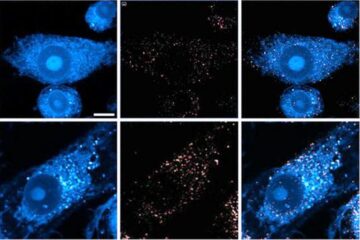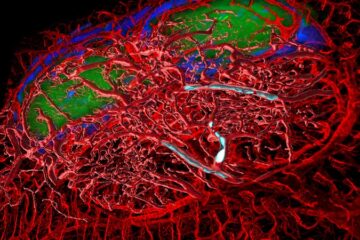Researchers find a pattern in evolution of lizard groups

Evolutionary biologists have developed a wide range of techniques to reconstruct the evolutionary history of particular groups of plants and animals. These techniques reveal much about the diverse patterns of evolution of life on earth, but few generalities have emerged, leading many scientists, such as the late Stephen Jay Gould, to conclude that each group of living things evolves in its own idiosyncratic manner. But now biologists at Washington University in St. Louis have proposed a general pattern among groups in the timing of evolutionary diversification.
Using novel statistical and analytical techniques, a group headed by Jonathan Losos, Ph.D. and Allan Larson, Ph.D., both Washington University professors of biology in Arts & Sciences, examined two important dimensions in the evolutionary diversification of four groups of lizards: the ages of branching points on the evolutionary trees of the lizard groups and variation among branches in morphological (body) traits, such as limb length and head size.
The researchers found that the four lizard groups differed in both respects. For example, in Australian agamid lizards, a disproportionate number of branching events occur deep (early) in the evolutionary tree, whereas, at the other extreme, among the South American Liolaemus lizards, the branching points are evenly distributed throughout the tree.
Similarly, the distribution of morphological variation differed in the four groups. In the agamids, closely related species tend to be morphologically similar and distantly related species morphologically different, whereas this relationship is much weaker for Liolaemus . In both cases, the other two lizard groups were intermediate.
What was most surprising to the researchers was that, despite the many differences among the four lizard groups, a strong overall relationship was found between the two aspects of evolutionary diversification. “This correlation was a big surprise,” said Losos. “The general worldview is that the history of each lineage is unique and due to varying circumstances so that no general pattern exists. Our findings tend to dispute that.”
The results were published in the August 15 issue of Science magazine. The research was supported by the National Science Foundation.
To reach their conclusions, the researchers produced a detailed genetic phylogeny (think of a branching family tree) for all species and physical data for the different species body types. Co-author James A Schulte, Ph.D., a former member of the Losos and Larson laboratories, now a post-doctoral researcher at the Smithsonian Museum of Natural History, gathered much of the phylogenetic and morphological data. Washington university graduate student Luke Harmon, the lead author on the paper, created a statistical program that uses phylogenies derived from genetic information (DNA sequences) from each species to estimate the patterns of branching and morphological change in each group.
“We can use the shape of these phylogenies, or evolutionary trees, to make conclusions about evolution,” said Harmon. “For example, we can compare the lengths of branches on these family trees to determine the rate that new species were formed. Deeper branches on trees connecting species indicate older branching, while shorter ones indicate more recent speciation. People have been studying these patterns with fossil evidence for some time, but there is not much of a fossil record for lizards and many other terrestrial groups. I think the results will help biologists understand adaptive radiation better.”
“We tentatively explain our main finding using ecological and biogeographic theory,” said Larson. “Ecological theory suggests that ecologically similar species are unable to coexist through long periods of time in the same geographic area. If lineages with different ecological adaptations arose early in the history of a group, their descendants could coexist geographically through long periods of evolutionary time by maintaining those differences. If a group does not establish ecologically disparate lineages early in its history, lineages produced at the tips of the tree are more likely to explore a wide diversity of ecological roles.”
Lizards have been on the earth for more than 200 million years. There are as many lizard species as there are mammal species, and they make excellent models to study for evolution, said Losos, who has been studying Anolis and other lizards for more than a decade. He and his collaborators plan to analyze more lizard groups to see if the general patterns revealed in this report hold.
Media Contact
More Information:
http://www.wustl.edu/All latest news from the category: Life Sciences and Chemistry
Articles and reports from the Life Sciences and chemistry area deal with applied and basic research into modern biology, chemistry and human medicine.
Valuable information can be found on a range of life sciences fields including bacteriology, biochemistry, bionics, bioinformatics, biophysics, biotechnology, genetics, geobotany, human biology, marine biology, microbiology, molecular biology, cellular biology, zoology, bioinorganic chemistry, microchemistry and environmental chemistry.
Newest articles

Zap Energy achieves 37-million-degree temperatures in a compact device
New publication reports record electron temperatures for a small-scale, sheared-flow-stabilized Z-pinch fusion device. In the nine decades since humans first produced fusion reactions, only a few fusion technologies have demonstrated…

Innovative microscopy demystifies metabolism of Alzheimer’s
Researchers at UC San Diego have deployed state-of-the art imaging techniques to discover the metabolism driving Alzheimer’s disease; results suggest new treatment strategies. Alzheimer’s disease causes significant problems with memory,…

A cause of immunodeficiency identified
After stroke and heart attack: Every year, between 250,000 and 300,000 people in Germany suffer from a stroke or heart attack. These patients suffer immune disturbances and are very frequently…





















